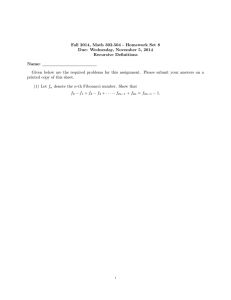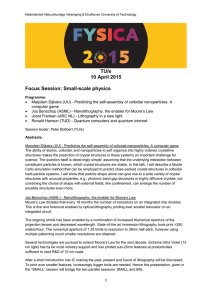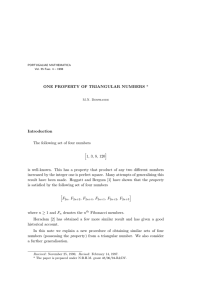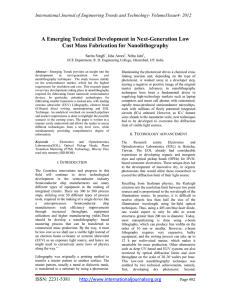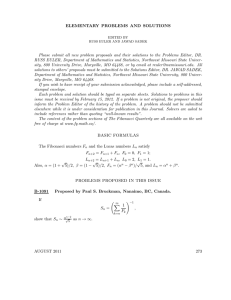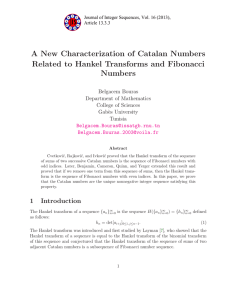Northwestern University MRSEC Novel Developments in
advertisement
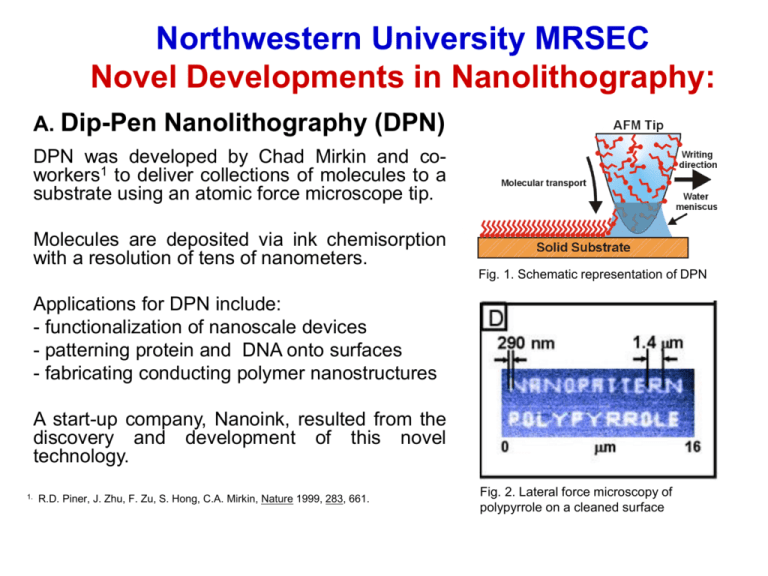
Northwestern University MRSEC Novel Developments in Nanolithography: A. Dip-Pen Nanolithography (DPN) DPN was developed by Chad Mirkin and coworkers1 to deliver collections of molecules to a substrate using an atomic force microscope tip. Molecules are deposited via ink chemisorption with a resolution of tens of nanometers. Fig. 1. Schematic representation of DPN Applications for DPN include: - functionalization of nanoscale devices - patterning protein and DNA onto surfaces - fabricating conducting polymer nanostructures A start-up company, Nanoink, resulted from the discovery and development of this novel technology. 1. R.D. Piner, J. Zhu, F. Zu, S. Hong, C.A. Mirkin, Nature 1999, 283, 661. Fig. 2. Lateral force microscopy of polypyrrole on a cleaned surface Northwestern University MRSEC Novel Developments in Nanolithography: B. Multilayer Nanosphere Lithography Nanosphere lithography was developed by Richard Van Duyne and co-workers1 to allow for inexpensive, massively parallel nanostructure fabrication that is flexible in nanoparticle size, shape, and spacing. Using multilayers of nanospheres, it is possible to design asymmetric nanoparticles of various nanoscale sizes and geometries.2 A novel, robust glucose sensor has been developed relying on surface enhanced Raman scattering (SERS) from the asymmetric nanoparticles obtained by this method.3 1. Hulteen, Van Duyne, J. Vac. Sci. Technol.A 1995, 13, 1153. 2. Haynes, Van Duyne, J. Phys. Chem. B 2001, 105, 5599. 3. Shafer-Peltier, Haynes, Clucksberg, Van Duyne, J. Am. Chem. Soc. 2003, 125, 588. Fig. 3. AFM image if a period nanoparticle array of silver resulting from multilayer nanosphere lithography. Nanoparticles are triangular and less than 125 nm in dimension. Fig. 4. left: Glucose molecules interacting with nanoparticles. right: SERS Spectrum of: A) Decanethiol, B) Decanethiol + Glucose, C) Spectrum B – Spectrum A, D) Crystalline Glucose
